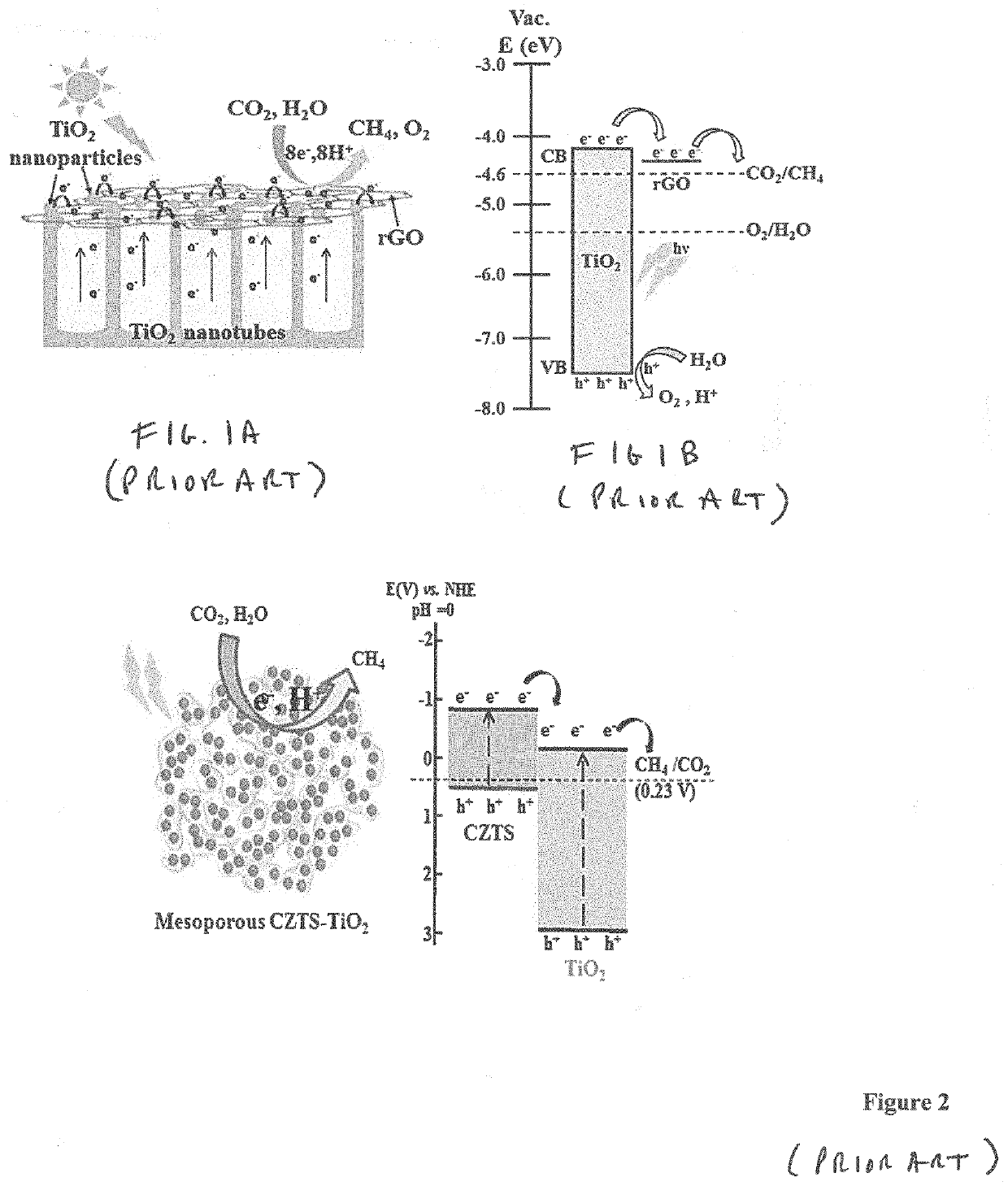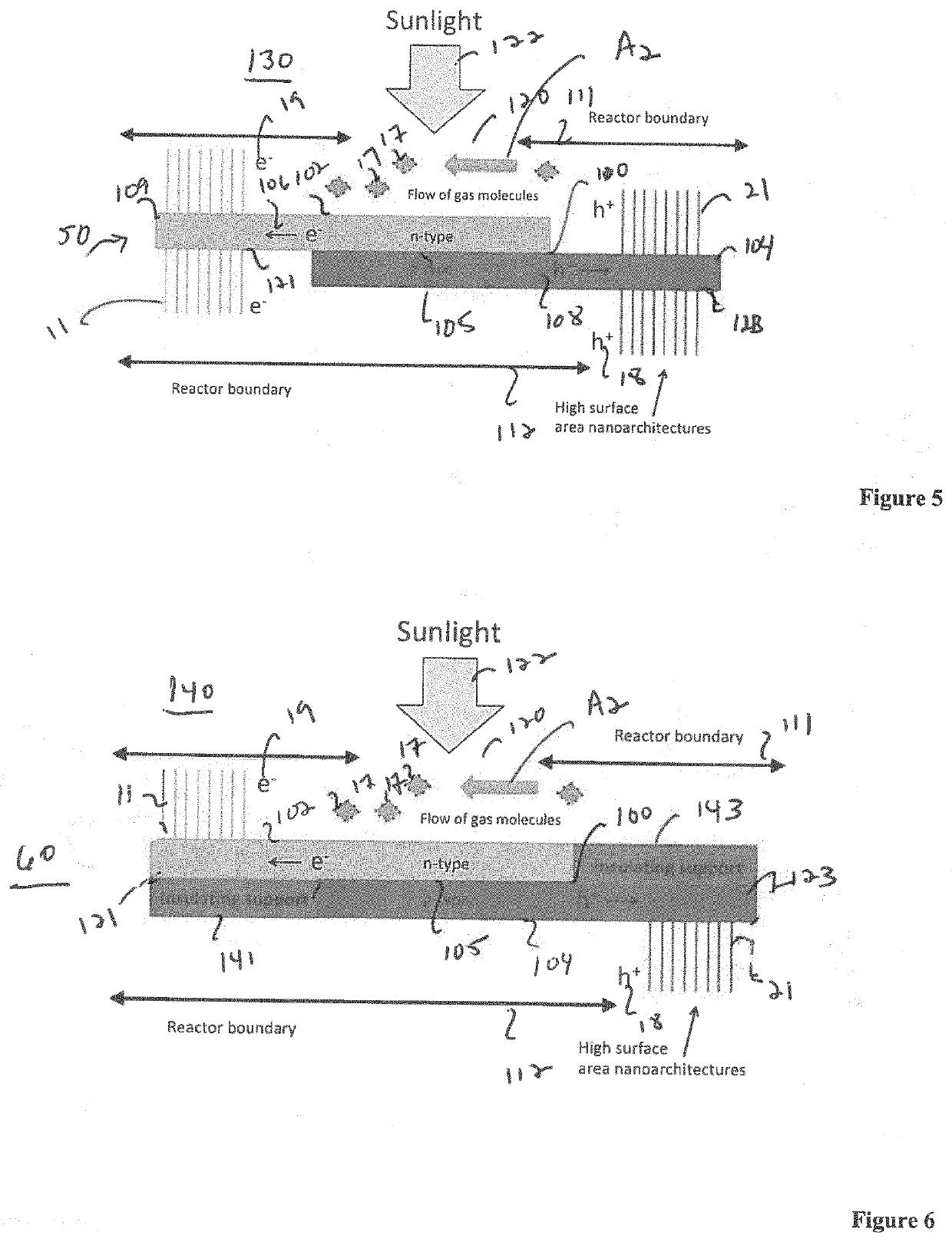Photocatalytic Device
- Summary
- Abstract
- Description
- Claims
- Application Information
AI Technical Summary
Benefits of technology
Problems solved by technology
Method used
Image
Examples
Embodiment Construction
[0032]Reference will now be made in greater detail to a preferred embodiment of the invention, an example of which is illustrated in the accompanying drawings. Wherever possible, the same reference numerals will be used throughout the drawings and the description to refer to the same or like parts.
[0033]Having summarized the invention, the invention may be further understood by reference to the following detailed description and non-limiting examples.
[0034]FIG. 4 is a schematic diagram of photocatalytic device 10. A pn-junction 100 is formed, to which there is spatial extent of n-type region 102 and p-type region 104 that are not in contact with the other. Electrons 19 generated in space-charge region 105 of pn-junction 100 are, due to the built-in electric field inherent in pn-junctions, swept into n-type material 106 of n-type region 102, while holes 18 are, for the same reason, swept into p-type material 108 of p-type region 104.
[0035]Holes 18 are free to travel along the length ...
PUM
| Property | Measurement | Unit |
|---|---|---|
| Length | aaaaa | aaaaa |
| Length | aaaaa | aaaaa |
| Wavelength | aaaaa | aaaaa |
Abstract
Description
Claims
Application Information
 Login to View More
Login to View More - Generate Ideas
- Intellectual Property
- Life Sciences
- Materials
- Tech Scout
- Unparalleled Data Quality
- Higher Quality Content
- 60% Fewer Hallucinations
Browse by: Latest US Patents, China's latest patents, Technical Efficacy Thesaurus, Application Domain, Technology Topic, Popular Technical Reports.
© 2025 PatSnap. All rights reserved.Legal|Privacy policy|Modern Slavery Act Transparency Statement|Sitemap|About US| Contact US: help@patsnap.com



